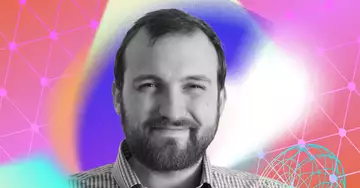For many observers, the collapse of LUNA and UST was a black eye for cryptocurrencies. For Charles Hoskinson, it was a vindication of his slow approach to blockchain development.
"If you move too fast, as we saw with Luna, and as we saw with the $10.5 billion in hacks last year, you could actually make it work until it doesn't work anymore, and then when it doesn't work anymore, it's a catastrophic failure and everyone loses their money," the Cardano founder said in a recent interview with CoinDesk.
In contrast, he and his company, IOG (formerly IOHK), are taking a deliberate approach to building the Cardano network, playing the "long arc game" that is measured not in weeks or months, but in years to decades.
"We always say that it's not the first out of the gate, but the best out of the gate" that will succeed, Hoskinson said. "The people who will survive are those who are tested under stress and prove resilient."
Hoskinson, who will speak at CoinDesk's Consensus 2022 in Austin, Texas, next month, has worked in the industry for nearly a decade - a lifetime in crypto. As a member of Ethereum's founding team, he famously fell out with the blockchain's creator, Vitalik Buterin.
Despite Hoskinson's penchant for controversy and Cardano's protracted development, the project is among the most widely followed cryptocurrencies, with ADA, the network's native currency, having a market cap of $15.9 billion as of Friday, making it the eighth largest in the market.
Hoskinson readily acknowledged that Cardano's development process is "a bit slower" than other projects. In fact, Cardano only gained the ability to run smart contracts last year, four years after the network's launch, lagging far behind Ethereum and other general-purpose blockchains.
This month, the liquidation of UST - a so-called algorithmic stablecoin designed to hold its value against the dollar without collateral - and its associated token LUNA shook global crypto markets. For Hoskinson, the debacle underscored the dangers of a "space where financial incentives and market structures are structured in such a way that speed trumps quality."
In the long run, Hoskinson said, the slower approach will win. Short-term oriented projects will "always break down," and the market will eventually come to its senses.
Cardano in Ethiopia.
Last April, IOG announced a partnership with the Ethiopian government to create a blockchain technology-based system to track student performance in local schools.
When asked for an update, Hoskinson said, "You take two steps forward and one step back." In October, a new education minister succeeded the minister who had reached the agreement with the IOG. The outbreak of civil war in Ethiopia the following month further complicated matters.
Fortunately for Cardano, the IOG met with the new education minister to ensure that the agreement we had reached under the previous minister continued, Hoskinson said. "We are now at a point where a systematic rollout is possible. If we're lucky, we should have about 1 million to 2 million students in the system by the end of the year."
All in all, Hoskinson says, "it's pretty amazing that despite all these difficulties, we're actually on track. The ultimate goal is 5 million students. I think at the current rate, we will reach that goal sometime in 2023."
When that happens, he said, "it will be very easy to expand it to another 15 million, and then it may even be possible to integrate these ideas into the 'digital Ethiopia' ideas that the prime minister wants to implement by 2025."
Blockchain and ESG
This month, Hoskinson attended the Milken Institute Global Conference, an annual gathering of muckety-mucks in Los Angeles, and picked up promising signals for blockchain developers.
Topic A was environmentally sound business practices, known by the acronym ESG (environmental, social and governance).
"The No. 1 topic they talked about was how we can implement the ESG part from the perspective of oil companies, from the perspective of battery-powered car companies and from the perspective of government," Hoskinson said.
The discussion of blockchains as a way to assess the ESG performance of such companies spread throughout the conference, Hoskinson said, because the point of the technology is to "create uniform business standards for everyone and then somehow enable the enforcement of those standards so you can audit, track and trace."
(Bitcoin's energy-intensive mining process is often derided - rightly or not - as a major contributor to climate change, but it's not the only way participants in a blockchain network can reach consensus on which set of records is true. Cardano, for example, uses the proof-of-stake method, which requires less computing power and electricity than Bitcoin's proof-of-work system, though whether it is as secure is debatable).
In addition, Hoskinson said, "The most important [part of] ESG is the metadata and the identity component. You have to know who's doing what and where, and you have to have extensive metadata about the facts and circumstances, because then you could talk about an audit system and an ESG assessment."
Hoskinson, who donated $25 million to Carnegie Mellon University last year, said he might retire and live on a bison ranch in Wyoming, but he stays in business because he wants to solve societal problems like this. He even threw in a kind word for his former colleague to emphasize the point.
"The great entrepreneurs in our field like Vitalik ... Have things they care deeply about and want to solve," Hoskinson said. "They're not going to retire until they solve that problem.

